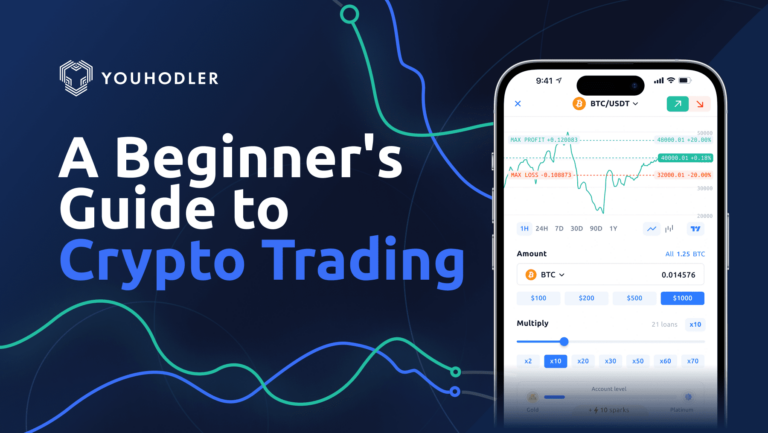
Step 1: Create and Verify Your Binance Account
- Sign Up: Go to the Binance website or mobile app, click on “Register” and follow the steps to create an account. You will be asked for an email and a secure password.
- Verify Your Identity (KYC): After registration, Binance will prompt you to complete KYC verification by submitting your government-issued ID and a selfie to confirm your identity.
- Enable Two-Factor Authentication (2FA): For enhanced security, it’s crucial to enable 2FA using Google Authenticator or SMS.
Step 2: Fund Your Binance Account
To trade on the spot market, you need to have cryptocurrency or fiat funds in your Binance wallet.
- Deposit Fiat Currency: If you want to trade using your local currency, go to the “Wallet” section and click “Deposit”. Binance supports a variety of fiat currencies like USD, EUR, and GBP.
- Deposit Cryptocurrencies: If you already hold crypto in another wallet or exchange, you can deposit them directly into your Binance account. Choose the asset you wish to deposit and follow the on-screen instructions to send your funds to the Binance wallet address provided.
Step 3: Navigate to the Spot Trading Interface
Once your account is funded, you can access the spot trading market:
- Go to the “Trade” Tab: On the main Binance dashboard, hover over “Trade” and select “Spot” from the dropdown menu.
- Choose a Trading Pair: Binance has hundreds of trading pairs. For example, if you want to trade Bitcoin for USDT, select the BTC/USDT pair. Use the search bar to quickly find the pair you’re interested in.
Step 4: Understanding the Trading Interface
The Binance spot trading interface may appear complex, but it’s fairly straightforward once you break it down:
- Order Book: On the left side, you’ll see the order book. This shows real-time buy and sell orders for the selected trading pair.
- Price Chart: In the middle, you’ll find the price chart of the selected trading pair. You can change the chart type (candlesticks, line, etc.) and time intervals.
- Buy/Sell Orders: Below the chart, you can place buy and sell orders. This is where the actual trading happens.
- Order Types: You’ll have the option to choose between different order types:
- Market Order: Executes immediately at the current market price.
- Limit Order: Executes only at a specific price or better. This is useful for setting a target price to buy or sell.
- Stop-Limit Order: Combines both stop and limit orders to set a trigger price (stop) and a limit price.
Step 5: Placing a Spot Trade
Once you understand the interface, you’re ready to place your first trade.
- Select the Pair You Want to Trade: For this example, let’s assume you’re trading BTC/USDT (buying Bitcoin with USDT).
- Choose Your Order Type:
- If you want to buy Bitcoin at the current market price, choose a Market Order.
- If you prefer to buy only when the price hits a specific level, choose a Limit Order and set your desired price.
- Input Your Amount: Enter the amount of Bitcoin you want to buy (or the amount of USDT you want to spend).
- Execute the Trade: Once you’ve set the order details, click “Buy BTC”. Your order will be processed and added to the order book if it’s a limit order, or executed immediately if it’s a market order.
- Check Your Orders: You can track your open orders, trading history, and account balance by navigating to the “Open Orders” and “Order History” sections at the bottom of the interface.
Step 6: Managing Your Trades
Managing trades is an essential skill for spot traders. Here are a few tips to help you stay on top of your trades:
- Set Stop-Losses: A stop-loss order can help minimize losses by selling your asset once it hits a specific price level. This is useful for protecting your capital during market downturns.
- Take Profit: If the price of your cryptocurrency reaches a target, a take-profit order can automatically sell and lock in your gains.
- Portfolio Monitoring: Binance’s wallet and trade history sections allow you to review the performance of your portfolio in real time.
Step 7: Withdraw Your Assets
Once you’ve successfully completed your trades and are satisfied with the outcome, you might want to withdraw your funds.
- Go to Wallet: Click on “Wallet” at the top of the page and select “Withdraw”.
- Withdraw Cryptocurrencies: Choose the cryptocurrency you want to withdraw, input the destination wallet address, and specify the amount. Always double-check the address to avoid errors.
- Withdraw Fiat Currency: If you wish to withdraw fiat currency, select the fiat option and choose your bank or payment method.
Tips for Successful Spot Trading
- Research and Stay Updated: The crypto market is highly volatile. Stay informed about market trends and the news affecting cryptocurrencies.
- Risk Management: Only trade with funds you can afford to lose. Diversify your portfolio to mitigate risk and always have a plan.
- Use Trading Tools: Binance offers advanced tools like charting software and order types that can help you make better trading decisions.
- Start Small: If you’re new to spot trading, start with small amounts to get a feel for the market and the platform.
Conclusion
Spot trading on Binance is a straightforward process once you understand the basic principles and the platform’s interface. By following this guide, you’ll be well on your way to executing your first trades. Remember, while the potential for profits is high, cryptocurrency trading is inherently risky. Always trade with caution, set realistic goals, and never invest more than you can afford to lose.
Happy trading!









